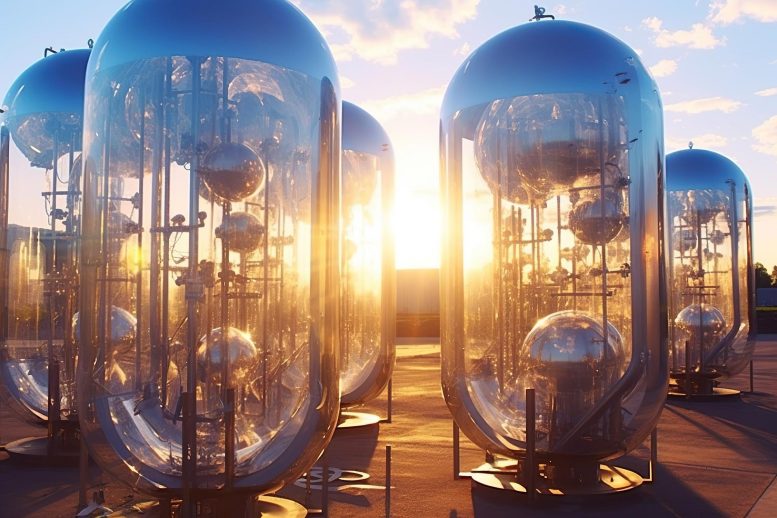
University of Cambridge researchers have developed a solar-powered reactor that turns CO2 from industrial emissions or air and plastic waste into sustainable fuels and valuable chemicals. The breakthrough research highlights a critical stride towards a fossil-fuel-free, circular economy. (Artist’s concept.)
Researchers have demonstrated how carbon dioxide can be captured from industrial processes – or even directly from the air – and transformed into clean, sustainable fuels using just the energy from the Sun.
The researchers, from the University of Cambridge, developed a solar-powered reactor that converts captured CO2 and plastic waste into sustainable fuels and other valuable chemical products. In tests, CO2 was converted into syngas, a key building block for sustainable liquid fuels, and plastic bottles were converted into glycolic acid, which is widely used in the cosmetics industry.
Unlike earlier tests of their solar fuels technology, however, the team took CO2 from real-world sources – such as industrial exhaust or the air itself. The researchers were able to capture and concentrate the CO2 and convert it into sustainable fuel.
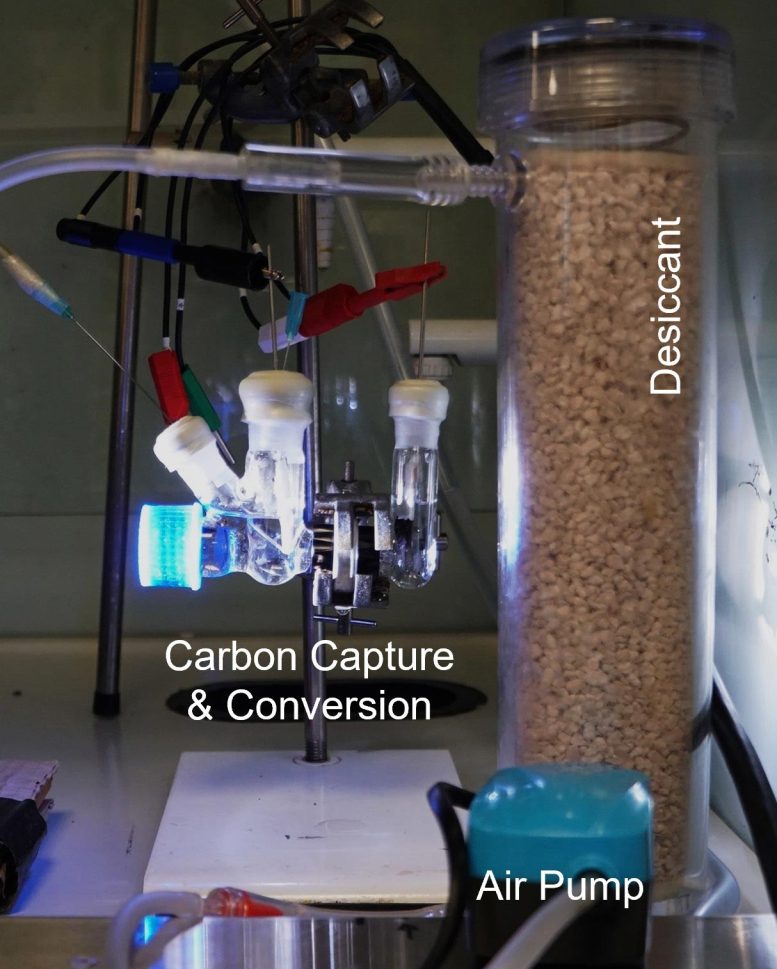
Photograph showing carbon capture from air and its photoelectrochemical conversion into fuel with simultaneous waste plastic conversion into chemicals. Credit: Ariffin Mohamad Annuar
Although improvements are needed before this technology can be used at an industrial scale, the results, reported in the journal Joule, represent another important step toward the production of clean fuels to power the economy, without the need for environmentally destructive oil and gas extraction.
For several years, Professor Erwin Reisner’s research group, based in the Yusuf Hamied Department of Chemistry, has been developing sustainable, net-zero carbon fuels inspired by photosynthesis – the process by which plants convert sunlight into food – using artificial leaves. These artificial leaves convert CO2 and water into fuels using just the power of the sun.
To date, their solar-driven experiments have used pure, concentrated CO2 from a cylinder, but for the technology to be of practical use, it needs to be able to actively capture CO2 from industrial processes, or directly from the air. However, since CO2 is just one of many types of molecules in the air we breathe, making this technology selective enough to convert highly diluted CO2 is a huge technical challenge.
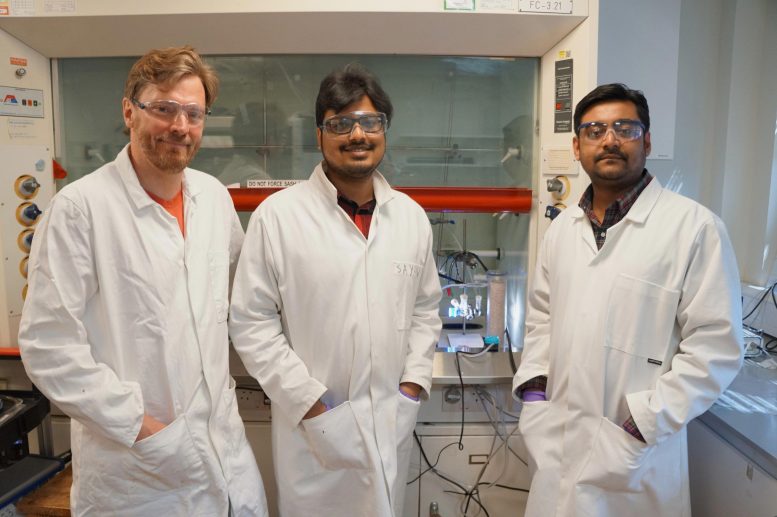
L-R: Erwin Reisner, Sayan Kar, Motiar Rahaman. Credit: Ariffin Mohamad Annuar
“We’re not just interested in decarbonization, but de-fossilization – we need to completely eliminate fossil fuels in order to create a truly circular economy,” said Reisner. “In the medium term, this technology could help reduce carbon emissions by capturing them from industry and turning them into something useful, but ultimately, we need to cut fossil fuels out of the equation entirely and capture CO2 from the air.”
The researchers took their inspiration from carbon capture and storage (CCS), where CO2 is captured and then pumped and stored underground.
“CCS is a technology that’s popular with the fossil fuel industry as a way to reduce carbon emissions while continuing oil and gas exploration,” said Reisner. “But if instead of carbon capture and storage, we had carbon capture and utilization, we could make something useful from CO2 instead of burying it underground, with unknown long-term consequences, and eliminate the use of fossil fuels.”
The researchers adapted their solar-driven technology so that it works with flue gas or directly from the air, converting CO2 and plastics into fuel and chemicals using only the power of the sun.
By bubbling air through the system containing an alkaline solution, the CO2 selectively gets trapped, and the other gases present in air, such as nitrogen and oxygen, harmlessly bubble out. This bubbling process allows the researchers to concentrate the CO2 from air in solution, making it easier to work with.
The integrated system contains a photocathode and an anode. The system has two compartments: on one side is captured CO2 solution that gets converted into syngas, a simple fuel. On the other plastics are converted into useful chemicals using only sunlight.
“The plastic component is an important trick to this system,” said co-first author Dr. Motiar Rahaman. “Capturing and using CO2 from the air makes the chemistry more difficult. But, if we add plastic waste to the system, the plastic donates electrons to the CO2. The plastic breaks down to glycolic acid, which is widely used in the cosmetics industry, and the CO2 is converted into syngas, which is a simple fuel.”
“This solar-powered system takes two harmful waste products – plastic and carbon emissions – and converts them into something truly useful,” said co-first author Dr. Sayan Kar.
“Instead of storing CO2 underground, like in CCS, we can capture it from the air and make clean fuel from it,” said Rahaman. “This way, we can cut out the fossil fuel industry from the process of fuel production, which can hopefully help us avoid climate destruction.”
“The fact that we can effectively take CO2 from air and make something useful from it is special,” said Kar. “It’s satisfying to see that we can actually do it using only sunlight.”
The scientists are currently working on a bench-top demonstrator device with improved efficiency and practicality to highlight the benefits of coupling direct air capture with CO2 utilization as a path to a zero-carbon future.
Reference: “Integrated capture and solar-driven utilization of CO2 from flue gas and air” by Sayan Kar, Motiar Rahaman, Virgil Andrei, Subhajit Bhattacharjee, Souvik Roy and Erwin Reisner, 19 June 2023, Joule.
DOI: 10.1016/j.joule.2023.05.022
The research was supported in part by the Weizmann Institute of Science, the European Commission Marie Skłodowska-Curie Fellowship, the Winton Programme for the Physics of Sustainability, and the Engineering and Physical Sciences Research Council (EPSRC), part of UK Research and Innovation (UKRI). Erwin Reisner is a Fellow and Motiar Rahaman is a Research Associate of St John’s College, Cambridge. Erwin Reisner leads the Cambridge Circular Plastics Centre (CirPlas), which aims to eliminate plastic waste by combining blue-sky thinking with practical measures.


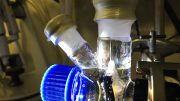


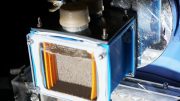
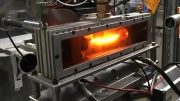
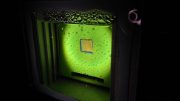
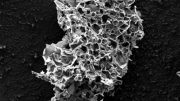
I’ve lost track of how many different types of processes have been demonstrated in the lab — many of which have been reported here — to synthesize chemicals out of CO2. However, I’m unaware of any of the recent demonstrations having been scaled up and commercialized. The issue is probably the efficiency of the process and the need to amortize the investment in the ‘factory.’ Just because something CAN be done doesn’t mean it should or will be done.
“… – we need to completely eliminate fossil fuels in order to create a truly circular economy,”
This is an assumption that hasn’t been proven. If we are going to start withdrawing CO2 from the air on commercial scales, we should be prepared to answer the questions 1) What is the optimum average global temperature, and 2) What is the optimum CO2 concentration, particularly for growing crops for human consumption? So, far, I haven’t seen anyone anxious to tackle either question.
These ‘solar reactors’ would be competing with available space with requirements for arable land, wind turbines, solar arrays, cities, and forests. Decisions will need to be made as to the best, most utilitarian uses of land that isn’t already committed. With low efficiency, it probably would make more sense to use the land for generation of electricity as the priority.
All of these fantasies are incredibly inefficient when compared to simply using the renewable energy as such, including for EVs to eliminate the need for any liquid fuels at all.
The remaining need for liquid fuels can be satisfied with conventional and advanced biofuels based on waste materials and a sustainable level of on-purpose energy crops.
Only when all EXISTING uses of electricity have been converted from fossil to renewable will CO2 conversion make ANY sense at all, and even then, it will make sense for concentrated sources of biogenic or unavoidable fossil sources that are CONCENTRATED, not on the silly idea of trying to harvest CO2 from ca. 400 ppm out of the sky.
All this is a nice science project and I for one would love seeing all of these inventions and the like succeed, however the reality is we still need fossil fuels one way or another. Even if we refine the oil into usable lubricants, we are still using oil, not to mention the countless products that everyone uses and has derivatives from crude. Let’s keep the hope but live in reality.